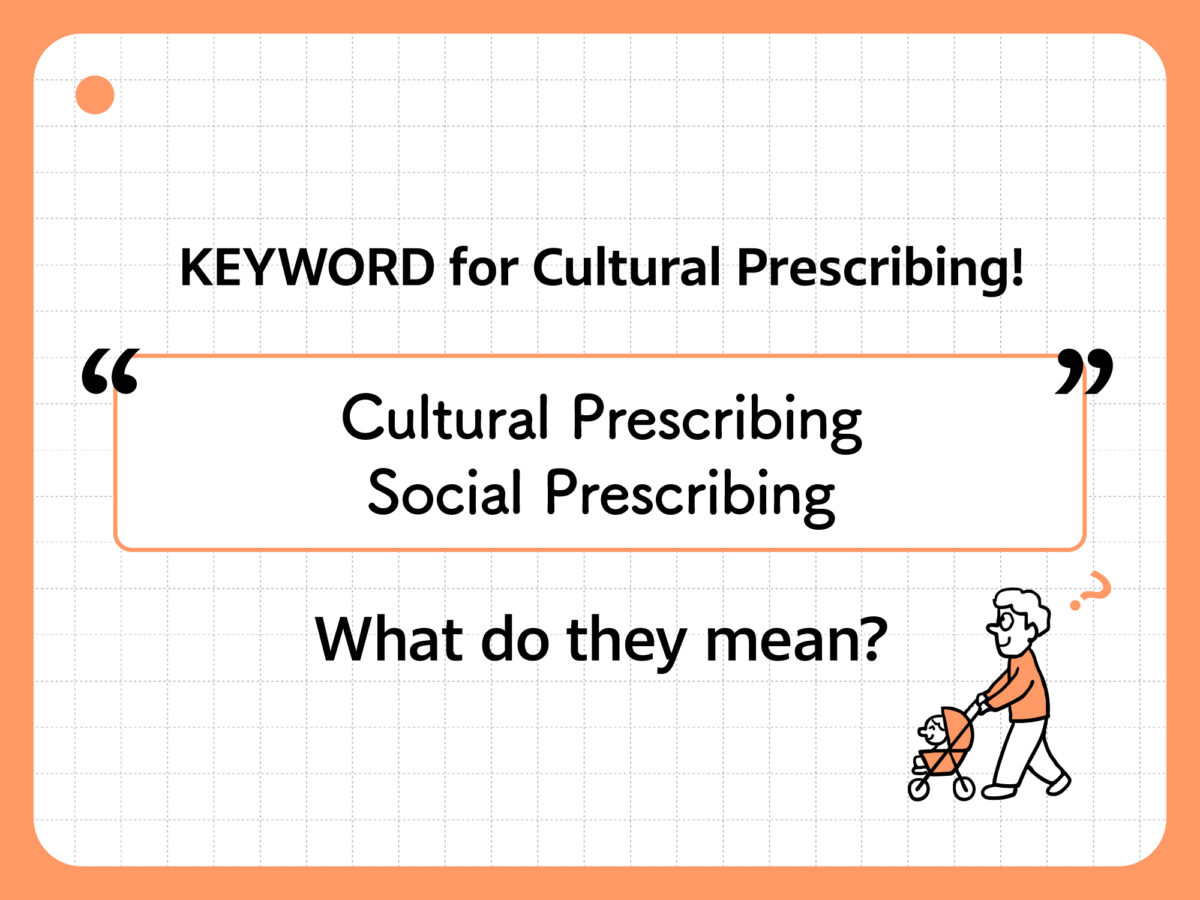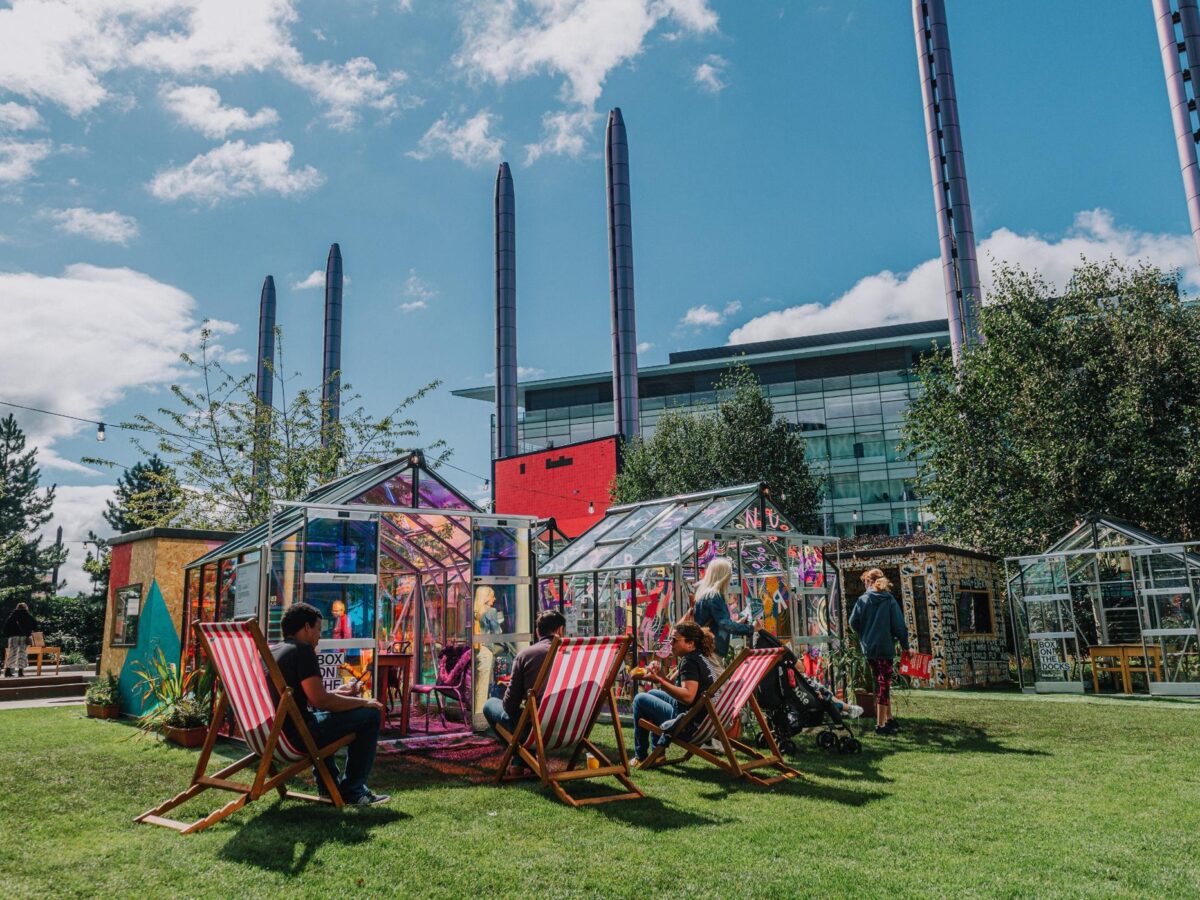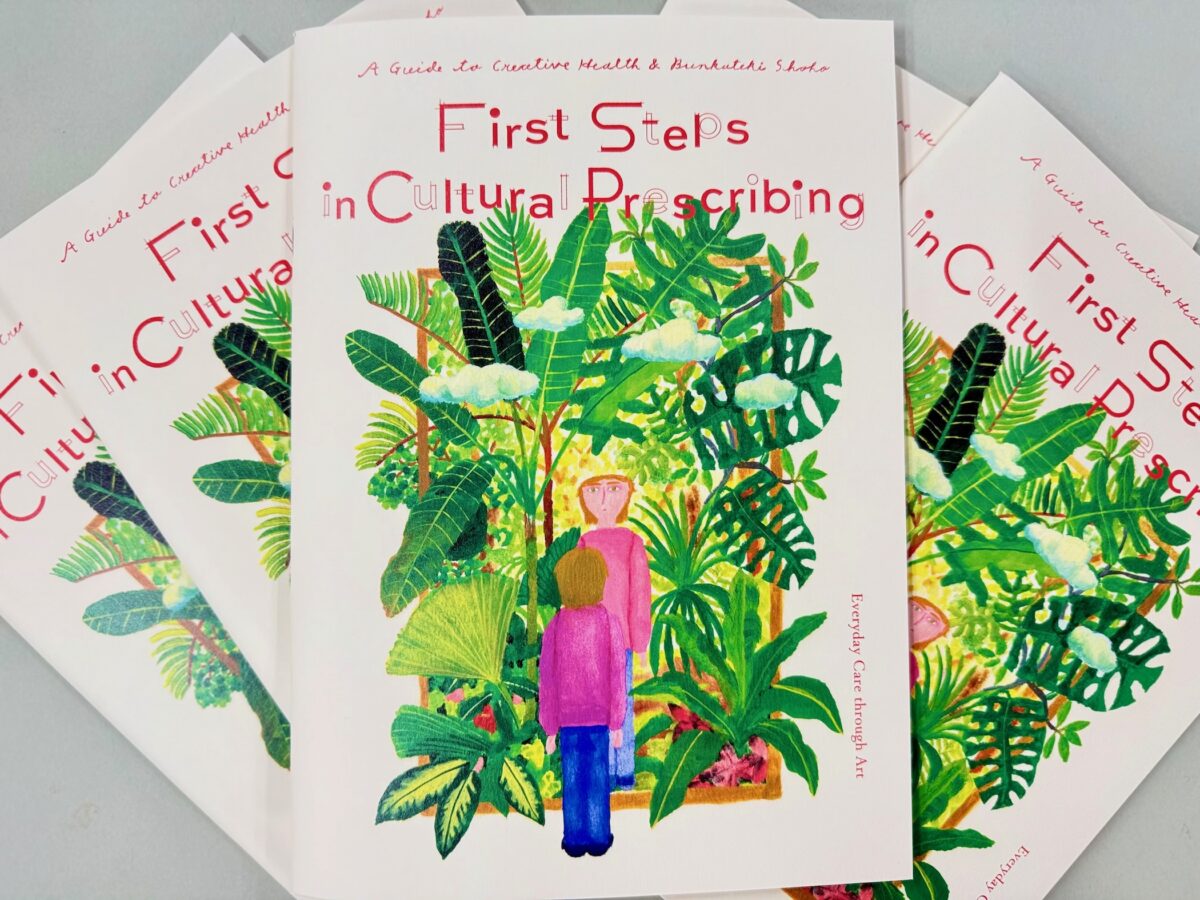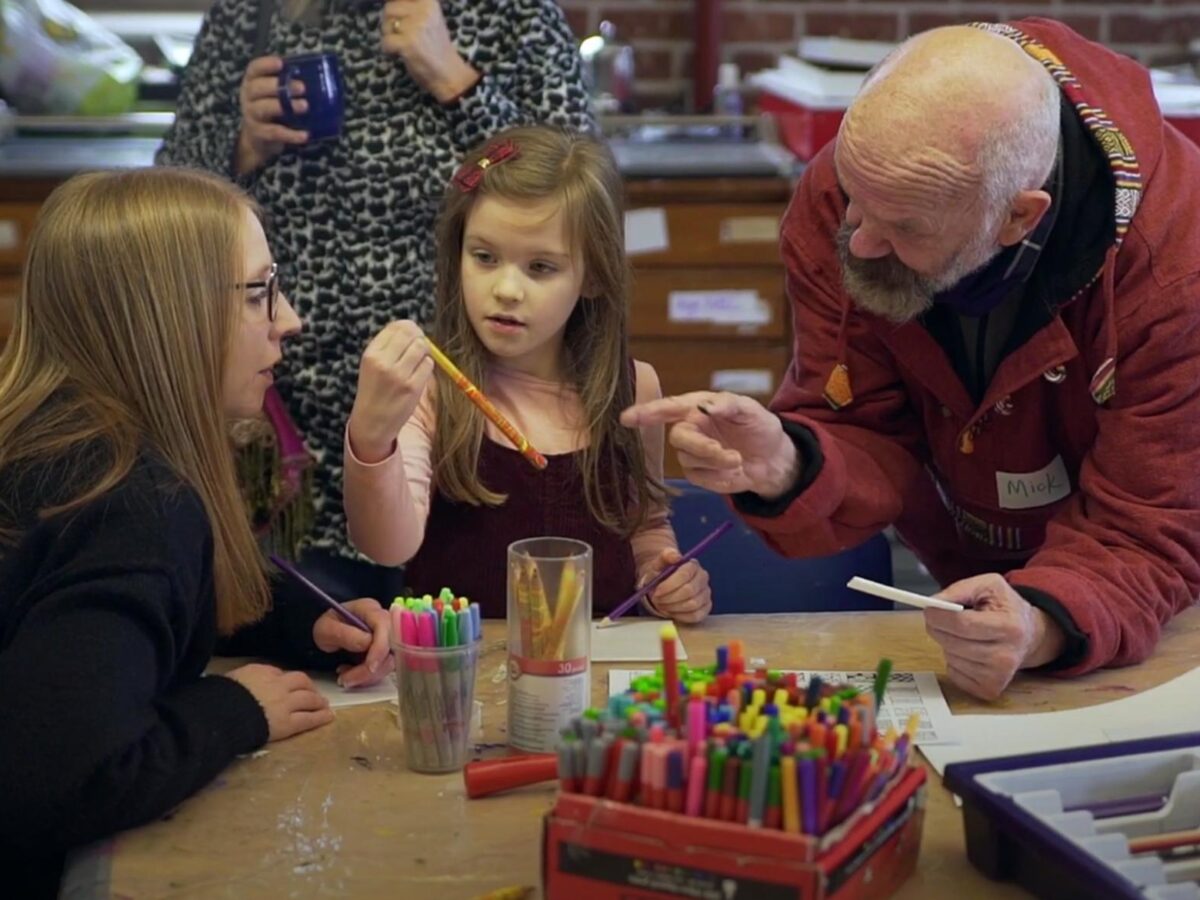 KEYWORD for Cultural Prescribing! "Cultural Prescribing and Social Prescribing" What do they mean?
KEYWORD for Cultural Prescribing! "Cultural Prescribing and Social Prescribing" What do they mean?
The Growing Understanding of “Social Prescription.”
The term “social prescription” has been gradually gaining traction recently. However, for those encountering this term for the first time, it might sound overly technical or irrelevant to them, perhaps thinking, “This may be something for professional specializations due to the word ‘prescription’ and so is not accessible to me.” Dr. Tomohiro Nishi, the author and editor of the books Social Prescribing and Everyone’s Social Prescribing is a medical doctor who works with patients in a hospital in Kawasaki City and contributes to local activities. So, is “social prescribing” only for medical doctors and health care professionals? The books reveal that the answer is no. Dr. Nishi clearly describes that “social prescribing” does not directly solve patients’ issues in the way that prescribing medicine does, but it can contribute to solving their problems by forming “connections to local societies.”
Everyone’s Skills Can Be Someone’s “Medicine”
Let’s think about “social prescribing.” Suppose that somebody feels unwell, either mentally or physically. When this person goes to a clinic, medicine is usually prescribed. But what if, instead of or alongside medication, this person were introduced to local activities like exercise classes, music, or art activities? Essentially, they’d be prescribed a connection with society.
UK case studies have reported where elderly people who joined fishing or knitting groups recovered from depression. “Link Workers” play a key role in realizing this kind of social prescription. After hearing about patients’ lives and interests, UK Link Workers match them with community resources like fishing, art, or gardening activities.
Some might wonder if this kind of intervention can really improve the situation. It is thought that twenty to thirty percent of the problems brought to medical organizations are considered social ones. That is why social prescribing can mean that one person’s activities and strengths can indeed be a form of “medicine” for somebody else. The books “Social Prescribing” and “Everyone’s Social Prescribing” explore the origins and social background of social prescribing, with examples from around the world that can be quite relatable. The following case studies in and out of Japan are introduced in the books, and be a useful reference for us.
- Drawing Life: Dialogue with arts, not words (UK)
- Nurse’s Office for Everyday Life: A place for consultation and dialogue (Japan)
- Kyoto Solidaire: Boarding home where elderly and young people live together (Japan)
- Frome: A Town where everybody can work as a Link Worker (UK)

– Parks where people exercise together to a broadcast of Japanese radio calisthenics every morning
– Local groups that regularly clean their towns
– Art programs where all are welcome to join
Cited from Syakaiteki Syohō (Social Prescribing) ©Gakugei Shuppansha Co., Ltd., all rights reserved.
These books introduce many of the “seeds” of social prescribing. The people introduced in the books are not all mighty superheroes, but ordinary people who hope to help people in need: When decent, kind and warm-hearted people get together and create networks they help prevent isolation and loneliness in societies.
Reading the books, you can’t help but think, “Maybe I could do something like this,” or, “Perhaps I could ask that person for help with this.” This may indeed by one of the reasons the author wrote the books. So, why not pick up both Social Prescribing and Everyone’s Social Prescribing, and see what you can do? Start small, get involved, and make a difference in your community!





